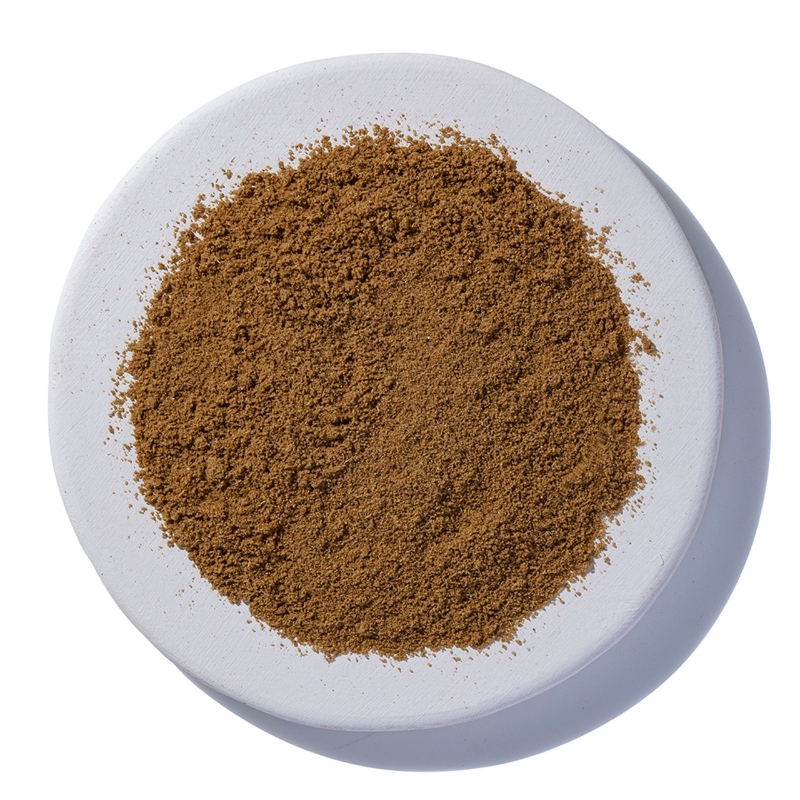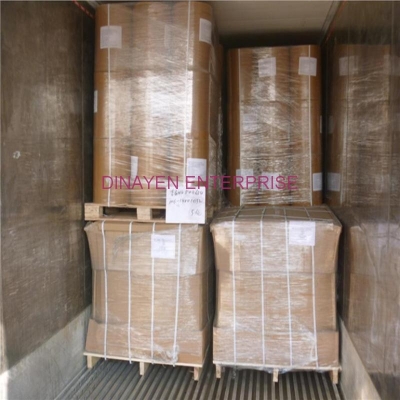-
Categories
-
Pharmaceutical Intermediates
-
Active Pharmaceutical Ingredients
-
Food Additives
- Industrial Coatings
- Agrochemicals
- Dyes and Pigments
- Surfactant
- Flavors and Fragrances
- Chemical Reagents
- Catalyst and Auxiliary
- Natural Products
- Inorganic Chemistry
-
Organic Chemistry
-
Biochemical Engineering
- Analytical Chemistry
- Cosmetic Ingredient
-
Pharmaceutical Intermediates
Promotion
ECHEMI Mall
Wholesale
Weekly Price
Exhibition
News
-
Trade Service
At the beginning of 2021, the prices of soybeans, wheat, corn and other major grain products rose further on the basis of the 2020 highs, which aroused the general concern of condiment manufacturers with the above-mentioned products as the main raw materials.
from June 2020 to January 2021, soybean oil futures prices continued to rise, rising nearly 50% in eight months.
U.S. soybean futures are also continuing to hit six-and-a-half-year highs.
International soybean prices have risen to about $13.65 a bushel, up 66 per cent from March 2020 and the highest level in nearly six-and-a-half years, according to Chicago Futures, a recent contract.
1991 to about 30 years, the beans have risen only three times in seven months in a row, and this time it's one of them.
can be said that soybean oil this round encountered a relatively strong, the United States beans rose in the peripheral environment.
the domestic soybean no. 1 futures price trend chart (week K line) in the import cost-driven, domestic soybean meal naturally has the phenomenon of rising.
the current price of soybean meal have seen a rare big rise, both hit a six-and-a-half-year high.
domestic soybean meal futures price trend chart (week K line) corn prices have undergone many regulations, the upward trend remains unchanged.
recent corn, whether it is the domestic and foreign futures market, or the spot market, there is no small increase.
Domestic corn futures price trend chart (week K line) from December 30, the lowest purchase price of wheat transaction results, close to 94% of the 19-year wheat turnover rate, close to 2400 yuan / ton of the average transaction price can also be clearly seen in Jiangsu wheat trend is strong, another wheat production area in Anhui Province turnover rate and average transaction price also began to rise.
So that some people in the industry issued a "corn rose corn rose, corn rose starch rose, starch rose starch rose, starch rose wheat rose, wheat rose wheat rose, wheat rose after flour rose, flour rose flour rose, flour rose freight, freight freight rose, freight rose after the goods tight" feeling.
more than 10 institutions forecast the price of major grain prices in 2021 recently, a number of research institutions forecast that the price of major grain prices in 2021.
, corn and wheat are expected to rise further in 2021 as bad weather continues and government replenishment continues to reduce supplies, rabobank has warned.
wheat is the most vulnerable to the current global weather among grain varieties.
, particularly in Russia, is worrying, with a lack of snow cover making the country vulnerable to cold snaps this winter, while La Nina weather is also causing drought across Argentina and the United States.
will have to pay higher prices for flour and wheat-related products," said Stefan Vogel, global strategist and head of agricultural markets at ABN Co-ed.
: There will be a structural bull market for bulk agricultural products.
Goldman Sachs recently released a new study that suggests the agricultural market will see a structural re-pricing bull market that will last for years in 2021, as the raw materials sector is also boosted more broadly by China's growing import demand and increased demand for biofuels.
Goldman Sachs believes China will be a key driver, and expects it to start a years-long import boom, spurred not only by re-imports after the sino-US trade war, but also by the growing demand for feed from domestic pig farms.
Goldman Sachs expects China's total corn imports to rise to 33m tonnes in 2021 and up to 55m tonnes by 2023.
demand for biofuels, led by the US, is set to grow again in the coming years, which could mean an extra nearly 1.5bn bushels of soybean use.
, Goldman sachs expects a structural re-pricing bull market for agricultural products in the coming years, with forward prices for corn, especially soybeans, needing to rise further.
2020 reflects the beginning of a years-long structural re-pricing bull market.
, Goldman Sachs raised its forecast for soybean and corn agricultural futures prices.
but as far as agricultural products are concerned, Goldman Sachs is cautious about the prospect of further increases in 2021, given that prices have risen in 2020.
World Bank expects moderate growth in agricultural products in 2021.
The World Bank said in its latest semi-annual Commodity Market Outlook report that agricultural commodities have recovered lost ground from the new crown pneumonia outbreak and are on track for modest growth by 2021.
reported that agricultural prices were relatively unsothy, but that the broader impact of the global recession had increased the number of people at risk of food insecurity.
report predicts that agricultural prices will rise by 3% in 2020 after the reduction in cooking oil production, and is expected to continue to rise slightly in 2021.
in some emerging markets and developing economies, concerns about food insecurity persist.
this concern is due to the impact of the global recession on incomes, bottlenecks in local food supplies and border restrictions that have strained labour supply, and soaring food prices in some countries.
analysis team at S.P. Global Platts estimates that the average price of u.S. soybean farms in 2020/21 (September to August) will be $10 a bushel, up 17 percent from a year earlier.
the USDA's December 2020 supply and demand report is more optimistic, with soybean prices expected to be $10.55 a bushel, up 23 percent from a year earlier.
U.S. Soybean Exports are expected to rise 31 percent year-on-year to 59.87 million tons in 2020/21, according to the U.S. Department of Agriculture.
Center for Predictive Science of the Chinese Academy of Sciences predicts that global agricultural products are expected to rise in 2021.
2021 CBOT soybean, corn and wheat futures are expected to average about 1130, 430 and 600 cents per bushel, respectively, up about 18.5 percent, 18.3 percent and 9.1 percent from the 2020 average.
the duration and intensity of La Nina in 2021 exceeds expectations, it could spur higher prices such as soybeans.
forecasts of the authorities have been confirmed in some areas, and categories, including cooking oil, have led to sharp price increases for end products due to the rising cost of major raw materials.
the condiment industry is not fully reflected in the terminal, but the rise in raw material prices has caused cost pressure.
condiment enterprises need to be proactive and actively respond to profit is a key factor for the survival and long-term development of an enterprise, so whether it is to do a good job of cost control and revenue assurance, will directly affect the enterprise's final profit.
the rise in the prices of major grains will be transmitted to the relevant condiment production enterprises, especially as the condiment industry soybeans, corn and other grain prices, to the related industries caused a certain amount of cost pressure.
China Condiment Association Executive Vice President and Secretary-General Bai Yan said: Although due to different product types, the main costs are different, affected by the price fluctuations of raw materials vary, condiment enterprises still need to do a good job in advance measures to establish a risk warning mechanism, through intelligent manufacturing, product innovation, channel optimization and other ways to resolve the pressure of rising costs.
1, the essence of intelligent manufacturing cost-effective intelligent manufacturing is to use technology to get rid of manpower, thereby reducing the low productivity caused by human error, product quality is difficult to control the phenomenon.
condiment industry as a traditional manufacturing industry, in the heritage of traditional manufacturing processes at the same time, has begun the pace of intelligent manufacturing.
a number of outstanding brand enterprises, such as Haitian, Li Jinqi, Hengshun, etc. have achieved intelligent manufacturing.
through intelligent manufacturing, reduce production costs, improve production efficiency, thereby enhancing the strength and competitive advantage of enterprises.
2, product innovation, to avoid homogenization competition flavoring products rich in varieties, categories? All.
, there is a single condiment, and compound condiments; That is, fermented products, and non-fermented products; That's it? Food condiments, and Chinese food condiments; That is, there are terminal-oriented condiments, and food-oriented condiments.
and homogenization competition between products is fierce, with price wars and traffic stations occurring from time to time.
in the competition, can choose their own product positioning, and always maintain a strong product quality, is the enterprise to avoid price war, avoid limited to homogenization of the fundamental competition.
consumer group positioning, for example, China now has a 300 million middle class, and their focus on condiments is no longer on price, but on product quality and whether they match their taste in life.
, middle-class-oriented condiments and rural or third- or fourth-tier urban condiments are positioned differently.
3, channel operation to build private traffic condiment enterprises to pay attention to the business docking of these e-commerce platforms, analysis of platform consumption needs, in order to provide corresponding products, supplemented by a wealth of online promotion, expand product sales in this channel.
traditional distributor channels of condiments are still mainstream, is the main way to achieve bulk sales of condiments.
through the joint efforts of manufacturers and distributors, research offline and online sales combined way to innovate the distribution model.
service to consumers, build and operate the private domain traffic of the enterprise, help improve channel operational efficiency, foster consumer brand loyalty.
market is changing rapidly, although whether the main food prices rise still need to be tracked and studied, but as a condiment enterprises, it is imperative to establish a risk warning mechanism to adapt to the changes in the modern market.
have a sound mechanism system, there are professional information and intelligence personnel, then enterprises to deal with the risk, it is necessary to calm a lot.
warning tips, enterprises can better carry out risk prevention and control, quickly respond.







